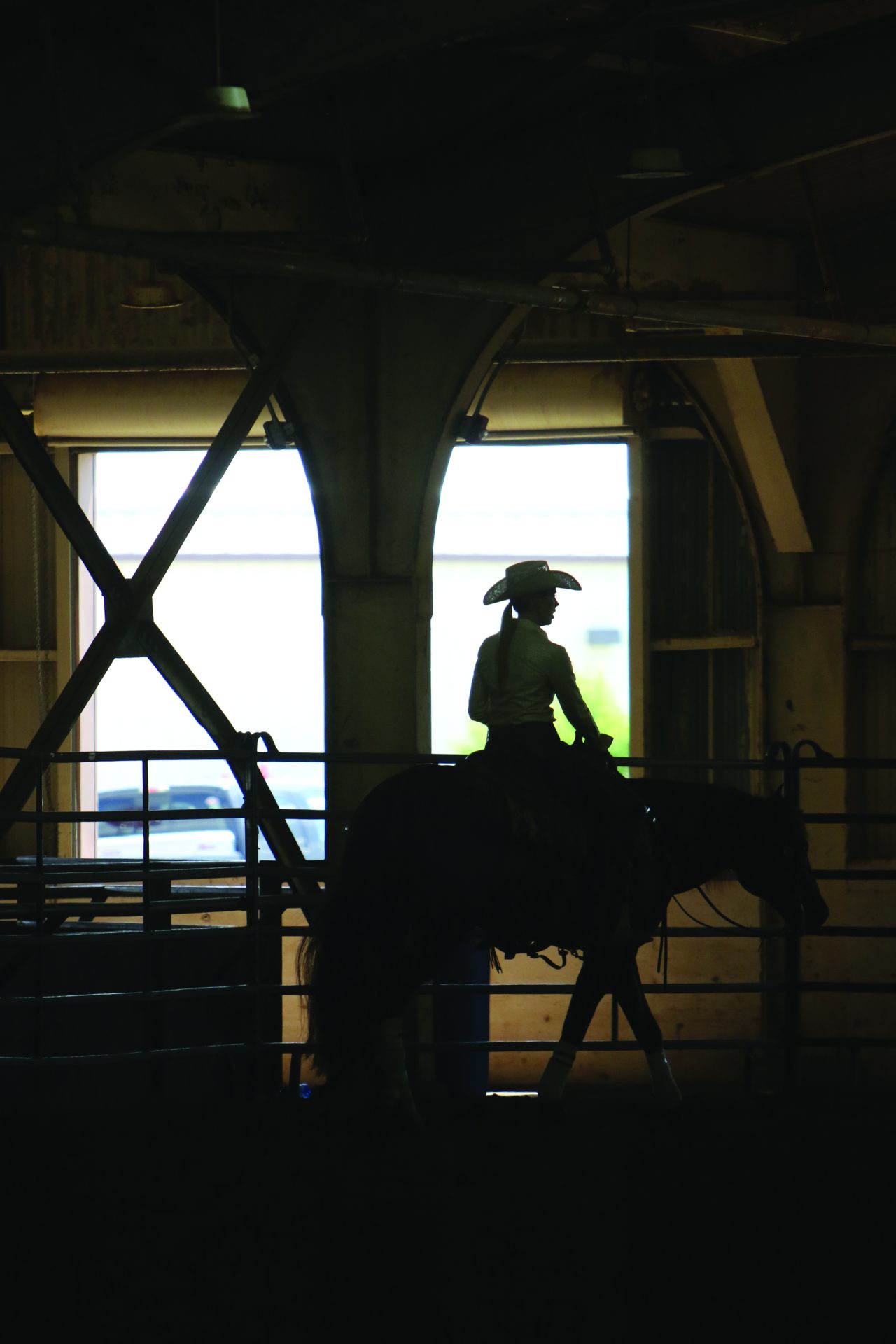You have a student intern. Now what do you do?
By Katie Navarra

Working students at stables are a lot like interns in the corporate world. They’re individuals who hope to learn the skills necessary to become a professional in their chosen career. In an office setting, the job tasks occur within a normal 9-to-5 workday and the intern returns home at night. These individuals are often paid at an hourly rate and/or receive college credit. In comparison, working students at a barn often begin their day at sunup; live on the property; and are paid with a small stipend, lessons, and training.
An intern’s job in an office is likely well-defined whereas a working student’s responsibilities at your barn are fluid and depends on the barn’s needs. Most often, the duties include feeding, mucking stalls, tacking, untacking, cooling out, and bathing horses. The list of chores also likely includes cleaning tack, keeping the stable tidy, and even loading hay. It all depends on your arrangement.
At Oakstone Stables in Cooperstown, New York, the working students start their day alongside owner Annbrit Hodgins. Hodgins has used working students for a handful of years. A cottage on the property houses three students and an assistant barn manager. International and local students alike spend 12 to 16 weeks living in a cottage on the property and working alongside Hodgins.
“A lot of barns see working students as free help,” she said. “We encourage our interns to get involved in our teaching program, too, and they get a lot of riding time.”
The key to success with working students is defining your goals and the educational benefits you can offer to participants. The experience is likely to be as unique as each stable. There isn’t a right or wrong list of duties that can be assigned through an internship experience. It’s a matter of finding balance to suit your needs and those of the student.
Although working students may be performing many of the same tasks as a paid barn helper, it’s important to remember that these individuals are seeking knowledge and expect access to it through observation, lessons, and hands-on experience.
Benefits of Working Students
Access to inexpensive, sometimes free, barn help is often the biggest benefit of having working students. Because working students have previous horse experience, it’s an opportunity for stables to find knowledgeable help for a nominal cost.
“Many places see students as free help,” said Hodgins. “But when you fully embrace what they bring to the experience, you can benefit in so many other ways.”
Hodgins strives to hire a mix of local and international students, ages 19 to 22. Even though they come from varied equine backgrounds and riding abilities, from beginner to advanced, she embraces what each one of them brings to the barn.
“They each have so much to offer,” Hodgins said. “I can see what they’re learning at equine colleges in the U.S. and see what management techniques are being used overseas.”
But in Hodgins’ opinion, the benefits are more extensive than inexpensive labor and insights. It’s about encouraging the next generation of equestrian professionals and providing opportunities to make lasting international friendships.
“Some have told me that other barns have so many working students they don’t even know each one’s name,” she said. “That puts people off the industry. I hold weekly team-building activities, feed them a few times a week, and make them feel like part of the staff.”
For Hodgins, who is originally from Europe, the biggest benefit she gains is providing connections who eventually lead to travel abroad.
“The students form such strong friendships, and it gives them an opportunity to travel,” she said. “U.S. students don’t travel abroad nearly as much because it’s so expensive. They become such close friendships that they end up going to visit.”
As a bonus, she’s found that through the process, having working students has created a steady supply of candidates. Although Hodgins uses online job boards and advertises positions with colleges, she’s found that hosting working students has created a pipeline for applicants. Former students have referred classmates, while others have returned for a second trip.
“I feel like I am able to give them something valuable through the working student experience,” she said.
Cons of Working Students
Hosting working students can be more time intensive. Working students expect to learn about management, training, and riding techniques that’ll help them advance their careers. That means they expect to spend time observing and working alongside you, the experienced professional, rather than being handed a list of “to-dos” to accomplish on their own. That doesn’t mean they are looking to be hand-held through every daily chore, just that expect to learn new techniques and strategies.
The biggest challenge Hodgins has encountered is matching personalities, especially when they live and work together on her property.
“Sometimes they don’t always get along,” she said. “When it’s a personality conflict, it’s something that is out of my control.”
There is also always a chance that the individual may not have the experience to interact with clients the same way you would in a delicate situation. While Hodgins encourages working students to get involved with the lesson program, she handles all of the customer service-related interactions with the boarders, parents of youth riders, and clients.
“One of my students told a parent that their child was naughty and spoiled,” she said. “What she didn’t know was that parent is my son’s boss.”
During the interview process she does her best to learn each individual’s personality. She tries to find out if the person is quiet or bossy and how they would handle typical scenarios at the barn.
“I try to mix it up. I can’t have all type-A personalities,” she said.
One way she determines if the applicant is a good fit is by talking with the rider’s current trainer. She also calls references.
“Even if they’re currently working at a donut shop it’s important to talk with their references,” she said.
Finding the right working student for your stable starts with understanding what it is you need them to do and understanding if their personality will fit into your barn’s atmosphere.



